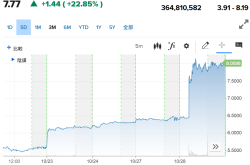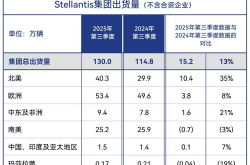Superconducting Materials: A New Breakthrough! Here's a Rundown of Relevant Concept Stocks (List)
![]() 10/29 2025
10/29 2025
![]() 414
414
On October 28th, the superconductor concept stocks demonstrated a robust performance. Dongfang Tantalum Industry and Yongding Co., Ltd. surged to their daily price limits during trading, while Western Superconducting Technologies saw a nearly 14% increase. Jinbei Electrician, Jingda Co., Ltd., Guolan Testing, and Western Materials also experienced significant gains.
On the news front, on the same day, the Institute of Metal Research, Chinese Academy of Sciences, unveiled a significant breakthrough in the localization of metal substrates for second-generation high-temperature superconducting tapes. Leveraging support from the Superconductivity Project of the Chinese Academy of Sciences, a team led by Rong Lijian from the institute successfully developed a high-purity tonnage C276 alloy using their proprietary material purification technology.
Recently, the bulk-prepared C276 substrate by the institute underwent rigorous verification at Shanghai Superconducting Technology Co., Ltd. and Shanghai Shangchuang Superconducting Technology Co., Ltd. It also facilitated the large-scale production of nearly a kilometer of high-temperature superconducting tapes at Eastern Superconducting Technology (Suzhou) Co., Ltd.
This achievement marks a pivotal breakthrough in the localization of key materials for high-temperature superconducting tapes in China, providing crucial support for the nationwide production and application of second-generation high-temperature superconducting materials.
Superconducting materials are substances that exhibit a sudden drop in electrical resistance to zero under critical conditions (critical temperature Tc, critical magnetic field Hc, critical current Ic). Since their initial discovery in 1911, superconducting technology has continuously garnered attention from the scientific and industrial sectors due to its vast potential for applications.
In recent years, the scope of superconducting applications has broadened. In the energy sector, superconducting technology is poised to enhance grid transmission efficiency. In transportation, superconducting maglev trains have already undergone experimental runs. Furthermore, in cutting-edge fields like quantum computing, superconducting circuits represent a key technological pathway.
In the realm of nuclear fusion, current global research primarily focuses on two main technical routes: magnetic confinement fusion and inertial confinement fusion. The tokamak device, a mainstream approach in magnetic confinement fusion, relies heavily on superconducting magnets as one of its core components. The cost of these magnets accounts for approximately 30%-40% of the total cost of a tokamak device, making them the most expensive part.
According to reports, second-generation high-temperature superconducting tapes (REBCO) are considered the cornerstone material for the 'super magnets' used in controllable nuclear fusion. Their technological advancement directly influences whether a super-strong magnetic field, capable of confining plasma at temperatures exceeding 100 million degrees Celsius, can be manufactured.
Recently, China has made several strides in the fields of controllable nuclear fusion and superconductivity. On October 25th, Mao Ning, the Spokesperson for the Ministry of Foreign Affairs and Director of the Information Department, shared the latest developments of the 'artificial sun' (BEST) in Hefei on overseas social media platforms, with the device expected to be completed by 2027. On October 8th, the Southwestern Institute of Physics, China National Nuclear Corporation, announced significant progress in the intelligent control of magnetically confined nuclear fusion plasma.
The International Atomic Energy Agency (IAEA) recently published the 'World Fusion Outlook 2025,' which includes a dedicated chapter on high-temperature superconducting magnets. It underscores that this revolutionary technology is pivotal in the development of next-generation magnetically confined fusion devices.
The report highlights that high-temperature superconducting magnets are instrumental in 'reducing costs and enhancing efficiency' in next-generation fusion devices. Compared to traditional low-temperature superconductivity, high-temperature superconductivity can achieve superconductivity at higher temperatures, with magnetic field strengths 2-3 times greater. Given that fusion power is proportional to the fourth power of magnetic field strength, high-temperature superconductivity can reduce device volume by over 50%, significantly cutting construction costs.
BOC International previously estimated in a research report that the potential market size for high-temperature superconductivity could reach hundreds of billions of yuan. Ignition Research, a research institution, also predicts that if nuclear fusion is fully commercialized, the controllable nuclear fusion industry will evolve into a market worth at least US$1 trillion by 2050, translating to a superconducting magnet market space exceeding US$100 billion.
Here, Stock Star has compiled a list of some concept stocks in the superconducting sector. Please note that these stocks are provided for investors' reference only and do not constitute any investment advice.
1. Western Superconducting Technologies: As the sole enterprise in the world capable of mass-producing low-temperature superconducting wires for nuclear fusion, the company's superconducting products include niobium-titanium (NbTi) superconducting wires and superconducting magnets, which have been utilized in controllable nuclear fusion projects. With an annual production capacity of 2,000 tons of niobium-titanium superconducting wires, it commands a 40%-50% share of the global market.
2. Dongfang Tantalum Industry: The company has achieved a purity breakthrough of 99.999% in superconducting cavity niobium materials, primarily used in national large-scale scientific facilities such as high-energy synchrotron radiation light sources.
3. Yongding Co., Ltd.: As the only enterprise in the world capable of mass-producing second-generation high-temperature superconducting tapes, it employs a unique IBAD+MOCVD technical route, achieving a critical current density three times that of traditional materials.
4. Lianchuang Optoelectronics: A leader in high-temperature superconducting magnets, the company has developed the world's first 100-meter-class high-temperature superconducting cable, boasting globally leading technology.
5. Antai Technology: One of the few enterprises in China capable of mass-producing high-performance low-temperature superconducting wires.
6. Jingda Co., Ltd.: A major shareholder of Shanghai Superconducting Technology, which leads in high-temperature superconducting tape technology and market share, capable of large-scale and stable mass production.







